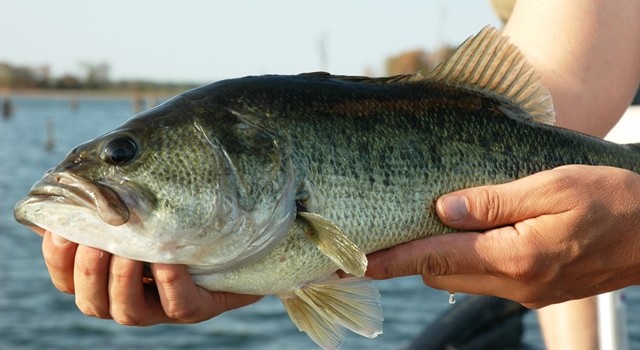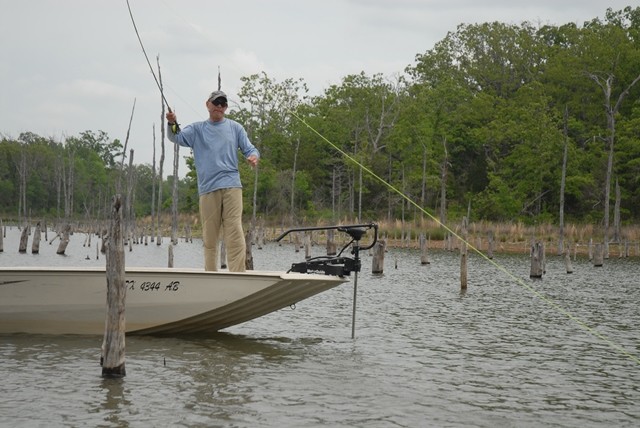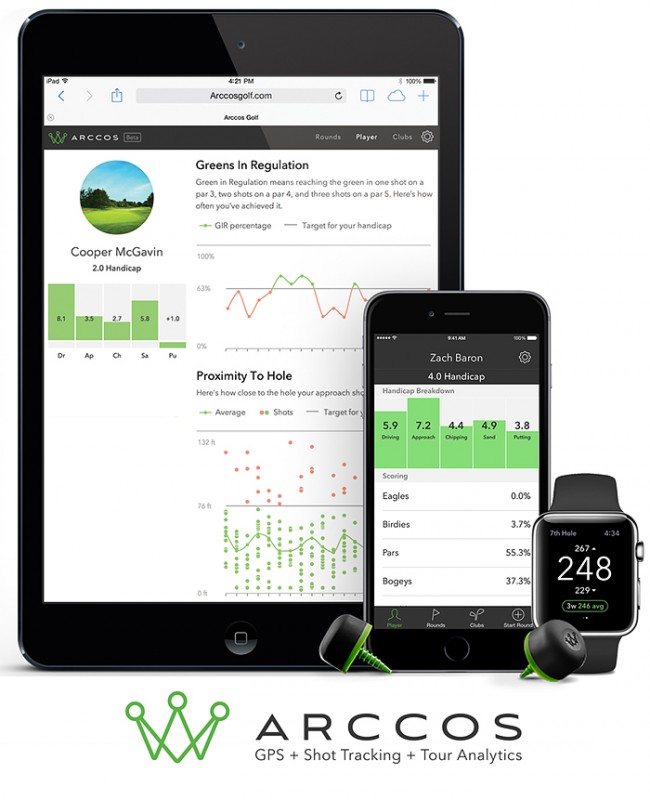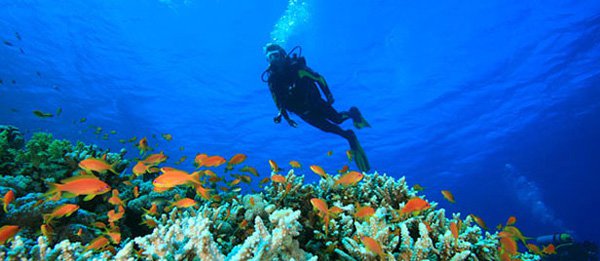
"There's a big 'un!"
It’s a phrase bass anglers – even those of us who are fly fishers – never grow tired of hearing.
This spring, after a year-long run of heavy rainfall in Texas that has left water bodies full and primed for a great run of spawn-time fishing, there's still probably no better spot to seek a big bass in the Lone Star State than on the fabled waters of Lake Fork.
Even today, all of these years after the lake was impounded in 1980, the powerhouse lake near Quitman continues to wow anglers with its amazing resiliency to crank out double-digit lunkers year after year.
The reservoir's amazing track record includes the past two Texas state record largemouth bass (18.18 and 17.67 pounds), two behemoths that helped make the 27,264-acre lake an attention grabber.
Add in the fact 32 of the Lone Star State's top-50 bass came from Fork – along with more than 250 Texas Parks and Wildlife Department ShareLunker bass weighing 13 pounds or greater – and the lake's reputation grows even more stellar.
Finally, add in the data from a 10-year-long study from 2003 until 2013 that found more than 12,000 bass of 7 pounds or greater being caught and reported by Lake Fork anglers and the case can't get much stronger.
What case is that? The case any serious bass angler worth his or her salt needs to make a pilgrimage to the holy grail of bass waters lying deep in the heart of East Texas.
Even if those anglers have an eight-weight fly rod in hand.
If finding your own big bass fly fishing success at Lake Fork is a bucket list kind of goal for this or any other future year, you'll need a game plan to make such dreams come true.
For starters, while big double-digit bass are caught in each month of the calendar year, the best time to seek such a bucketmouth is when winter turns into spring and the big sowbellies move towards shallow water.
The annual run of the spawning season starts with the current pre-spawn period as temperatures begin to warm into the 50s, typically from late February into March.
When such conditions are found, Orvis endorsed fly fishing guide Rob Woodruff (www.flyfishingfork.com) starts his search on Fork by looking in the upper ends of the lake.
He's particularly interested in finding the migrational corridors where bass will begin to transition from the deeper water of winter into early spring staging areas of 10 to 15 feet in depth, spots that will be just off the banks.
Fish during this phase are reasonably aggressive – especially the females feeding up for the spawn – and will take flies presented below the surface on bass taper floating lines, sink tips like the new Orvis Hydros HD Bank Shot line and intermediate lines that get the fly into the subsurface strike zone that pre-spawn fish will be utilizing.
When water temperatures move into the 60s and the heart of the spawn actually begins, major moves of spawning bass into the shallows will start taking place on the full and dark phases of the moon in both March and April.

To find big bass at Lake Fork in the spring, start by looking for such things as warmer water temperatures, firm bottom spawning flats, shorelines with maximum southeastern sun exposure and spawning areas that offer good protection from the wind. (Lynn Burkhead photo)
That's when Woodruff will search the northern reaches of the reservoir where waters warm first, seeking gradient areas where smaller creeks, ditches, roadbeds and even fence lines lead fish from deeper staging areas to gentler sloping flats in shallow spawning areas.
It that search, it pays to consider the lakebed composition since preferred spawning flats will have firm, sandy loam bottoms along with protection from prevailing wind and waves. Find those spots and spawning bass shouldn't be far away.
Once he has found a good area to target, Woodruff will then refine his search even more by looking for resting areas located near a spawning flat. Such money spots will be stopping points just off shallow banks, things like a lone tree, a hump, a submerged bridge or even an old pond dam among others.
He also notes areas where sandy deposits exist at the end of an underwater draw, a bench adjacent to a main creek channel, a protective secondary point that will protect beds, the sandy inside bends of creeks and things like old crop or hayfields with consistent depths.
Areas with protective secondary points and maximum southeastern sun exposure are gold mines in the spring spawning game, all top spots where breeding fish will gather in shallow water to produce the next generation of lunker bass at Fork.
Keep in mind while the sight of spawning fish in shallow water is indeed exciting, fly anglers don't necessarily have to target visible fish during the spawn if they feel uncomfortable doing that.
Woodruff says since big females will often be found just off the shallow water beds – usually on the first contour breakline from shallow to deeper water – he'll often target those fish that are on the move up to the bank.
Also note since the spawn progresses in wave-like fashion from northwest to southeast across the reservoir, anglers can often find pre-spawn fish, spawning fish and even post-spawn fish on the same spring day at Fork.
And while the spawn itself gets most of the attention, don't forget as the fish complete their reproduction cycle and go post-spawn – usually in mid-April and on into May as water temperatures move into the lower 70s – one of the best times of the year to fish at Fork is actually as the spawn comes to an end.
That's according to Major League Fishing champion and Bassmaster Elite Series pro Kelly Jordon, a longtime resident of the area and a former guide on Fork.
Jordon says that some post-spawn action will usually be on top since Fork's big bass are feeding heavily after the rigors of the spawn, looking for shad, bluegills and frogs situated near lily pads, grass beds and woody cover.
For those fly anglers willing to venture into deeper water (where post-spawn fish will stage before moving out deep for the summertime months), a streamer pattern fished on a sink tip or a sinking line like the Orvis Hydros HD Depth Charge line can prove to be deadly.
While such deep-water fly fishing can be a challenge, the rewards can be huge since Fork’s ample supply of underwater structure can get loaded up with big groups of hungry post-spawn fish staging on spots where a school of threadfin shad, gizzard shad or the barfish (yellow bass) are liable to swim by.
“Buy a good map and use your electronics,” said Jordon. “Start looking on points, channel bends or humps sticking out in the main lake. Start in 16 to 18 feet of water on up to 25 feet of water.
"Try to mark a lot of fish and when you do, fish there. If you’re not catching fish in May, then you need to change what you’re doing or what you’re fishing with, because you should be catching fish,” he adds.
“Move until you find them."
Which usually isn't too far on the big bass rich waters of Lake Fork.
Especially during the warmth of a Texas big bass spring, even for those anglers who are seeking a bona fide Lone Star State bucketmouth with nothing more than an eight-weight fly rod in their hands.
ARCCOS Gets A Handle On Your Game

LA Lakers defeat the Golden State Warriors


Copyright © www.mycheapnfljerseys.com Outdoor sports All Rights Reserved